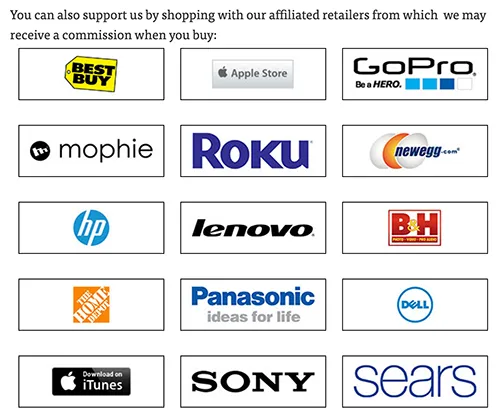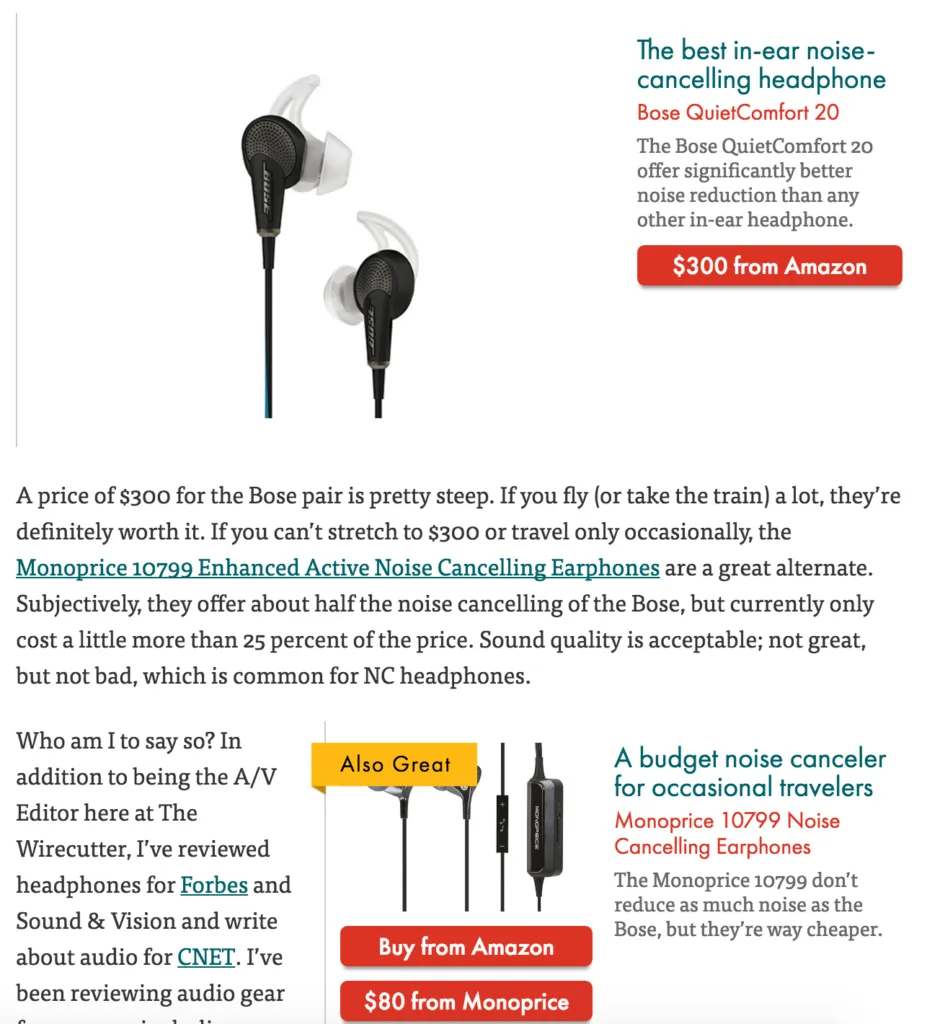Referral Marketing vs Affiliate Marketing – What’s the Difference?
We hear it all the time - What's the difference between referral marketing and affiliate marketing?
Both strategies rely upon incentives to drive revenue, but the underlying strategy and techniques vary significantly.
Affiliate marketing has a similar structure to referral marketing as they both use incentives to drive new customer revenue.
The key difference is that affiliate marketing focuses on third-party brand advocates to send customers to your business for a flat fee. Where referral marketing is focused on rewarding current customers to invite their friends to try your product/service.
There are distinct nuances with each that rely on consumer motivations, digital marketing tactics and overall product/market-fit.
In this guide we’ll use examples from successful consumer brands and publishers to illustrate how affiliate and referral marketing programs work.
What is Referral Marketing?
Referral marketing revolves around the shared relationship between your customers, their friends or associates and your brand. Current customers personally promote your brand to new users to earn rewards, ideally for both themselves and their friends.
Successful referral campaigns motivate customers to share your brand with their family, friends, and associates in a straightforward, natural fashion. Encouraging happy customers to become active brands ambassadors is simple, so referral marketing sets your company up for conversions while rewarding users for their participation.
While affiliate marketing is like enlisting a reputable yet unknown salesperson to spread the word about you online, referral programs are based in personal interactions. It’s like bumping into a friend on the street and having them share a great tip or piece of advice with you. Often called word of mouth marketing, referral campaigns center around some basic facts:
- A recent Nielsen consumer report showed that the most trusted form of advertising is a friend’s recommendation, with 83% trusting the source for buying decisions. The report also found that people are 4X more likely to buy when referred by a friend.
- A Wall Street Journal banking case study showed that referred customers are 18% more likely to stay and 16% more profitable than customers acquired through other channels.
- A Huzzah media study showed that not only do referrals improve marketing performance, but they also drive revenue. In the same study, 36% of small business owners noted that word of mouth is their best source of revenue, right behind returning customers at 44%.
- An Ogilvy study says that 74% of consumers identify Word of Mouth as a key influencer in their purchasing decision.
- A Radius global marketing study showed that millennials ranked word of mouth as the #1 influencer in their purchasing decisions on apparel, travel, electronics, financial products and consumer packaged goods.
Because we know and trust the person who’s referring us to a product or service, we are very likely to act upon their recommendation. Those in-line with a value proposition and in a buying position act upon social proof and follow the lead of their associates. Each following customer acts in similar fashion, spreading the value and honest appraisal of your brand to those in their inner circle.
How Does Referral Marketing Work?
First, customers or visitors who like your product or service refer people to your website, app, or a landing page. In return, there’s a reward. This reward comes in two forms:
- Altruistic emotions
- Rewards in the form of discounts, credits and upgrades.
Altruism is the cornerstone of any referral program.
Why?
Because it feels good to help out a friend. When happy customers are incentivized to invite people along for the ride, between 2-3 new customers are created. Research shows users aren’t as inclined to send invites just to gain an upgrade or an account credit - but offering double-side incentives for both the sender and receiver is incredibly encouraging.
You can use consumers' the innate desire to share good ideas within social networks against rewards. This motivates more strongly because giving brings more joy than receiving.
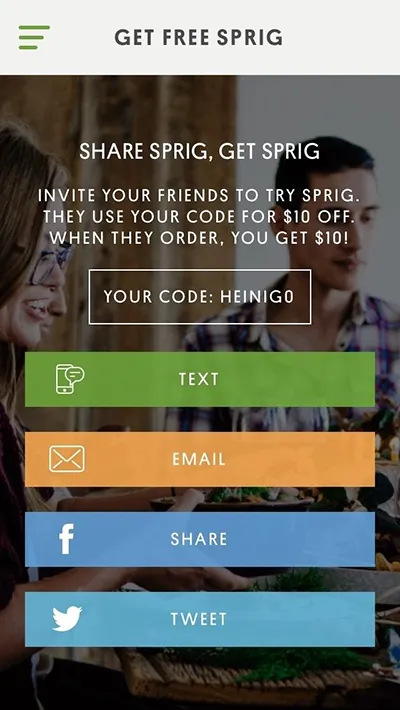
Health food app Sprig understands that referrals are best done easily and on the go. The clean and inviting in-app messaging design makes it clear that to give and get delicious healthy food is more fun than eating alone.
Bold social sharing CTAs makes referrals a one-click process for users. Increasing rates of mobile use is a distinct advantage to referral programs, especially those taking advantage of in-app messaging, push notifications, and other mobile referral strategies.
What to offer for referrals rewards is variable but must remain relevant.
Users are evolving from customers to brand ambassadors, creating valuable introductions and generating goodwill in almost exponential fashion. Compensating referrers (those making the introduction) with something valuable is key, but keep in mind that:
Focus upon customer engagement foremost. Building a stronger relationship with customers is the priority, as every individual that networks your offering is involved in a trusting relationship with your brand. Some will write reviews on your website, otherwise will post on social, but each referrer is becoming more loyal with each action.
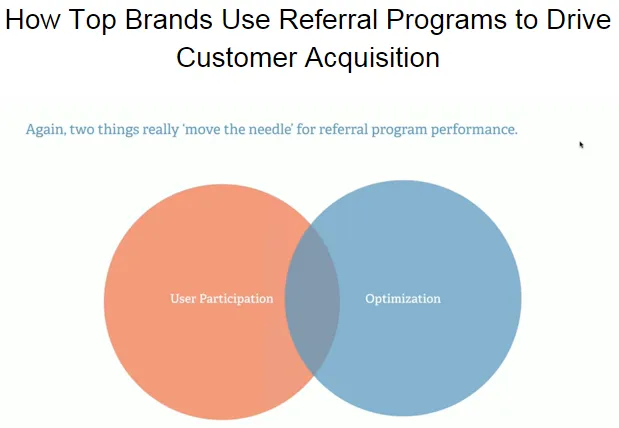 (Source)
(Source)
To maximize user participate, segment campaigns to specific user groups and create materials optimized for their communication channels. Brand ambassadors work mainly through social media platforms, text, email, and app interfaces. Rewards can be tailored to suit user channels with the most engagement.
Costs of Referral Marketing
The ROI for referral programs increases as user engagement and new customers expand the network of satisfied customers. As your customers are driving conversions, you can save on sales expenses in the short and long term.
If your customer service is lacking, this will be an incurred cost of a referral marketing program. Creating satisfied customers is a business essential never more clear when running a referral campaign. Be sure to shore up an inadequacies and address areas where customers might not enjoy their interaction with the brand. Customers satisfaction is mostly about feeling listened to and having support staff available, so investing in customer experience can reaps huge benefits.
Referral Marketing Software
Referral marketing solutions are an economical way to minimize the costs of staying updated of all the customer actions within campaigns. Benefits of software include:
- Flexible themes to support your brand’s look and feel
- Analytics to measure customer interactions
- Security features to protect against fraud
- Triggered email notifications to keep users engaged
- Seamless mobile platform integrations
How to Get the Most from Referral Campaigns
#1 Segment users: Referral programs work best in targeted campaigns that speak to a segmented group of users. Break your lists down into chunks such as:
- Users with highest lifetime value (to attract other spenders)
- Users with high levels of engagement
- Users in specific geographic regions
- Influencers with large social followings
#2 A/B test copy and rewards: When Airbnb ran A/B tests that offered a $25 incentive to both user and new friends - instead of just users - they saw referrals increase by 300%. Spend time to test and optimize copy and offers to suit your users.
#3 Go Mobile: 79% of people 18-44 have their phones with them 22 hours a day. Using mobile-mania to your advantage can reap huge rewards in the right referral market.
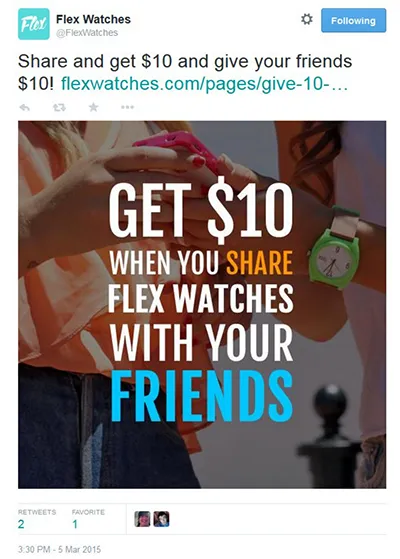 Ecommerce brand Flex Watch knows that social media and altruism are huge purchasing influencers, as many people use social media from their mobile device to check with friends before buying.
Ecommerce brand Flex Watch knows that social media and altruism are huge purchasing influencers, as many people use social media from their mobile device to check with friends before buying.
The bold and aptly branded message reminds users that “friends” and “$10” go hand in hand. The Flex Watch reciprocal rewards are mentioned near the appropriately placed referral link on the company’s Instagram. Mobile referrals are an ever increasing way to boost engagement with users across a wide variety of platforms.
What is Affiliate Marketing?
Affiliate marketing centers around a business relationship between a brand and an affiliate. In this type of performance-based marketing, the affiliate is paid to promote the brand. These publishers are compensated for each visitor or customer earned through their own marketing efforts.
If you’re having a hard time reaching clients, you could hire an affiliate who might be part of a larger affiliate network to approach consumers through their own tactics. These businesses act as agents, sending qualified traffic to your website. When one of these visitors converts, you pay the affiliate a commission.
Affiliate program success relies on locating advocates capable of reaching and promoting your product to your target audience. Customers will not know the advocate personally, and this is the crucial difference between affiliate and referral programs (more on this soon). Businesses can employ a range of affiliate partners to bring in robust supply of new customers.
How Does an Affiliate Marketing Strategy Work?
Since affiliate programs are pay-per conversion, most focus upon spreading a wide promotional message to consumers. Standardized advertising methods such as SEO optimization, PPC, email marketing, content marketing and display advertising are common. The affiliate shoulders the responsibility of driving sales for your business.
The limiting factor here is that affiliate advocates do not have a connection with potential customers, so personalization and intuitive outreach is minimal.
However, successful affiliates often publish reviews of products or services.
For example, The Wire Cutter is a favorite site for reviews of consumer good like gadgets and electronics. On it’s “How to Support The Wire Cutter” page, the company lays out it’s monetized model: affiliate commissions through large retailers like Amazon, Apple, and Home Depot.
The Wire Cutter doesn’t sell anything, it only makes high quality product recommendations that come with an Amazon link. The site doesn’t accept ads or sponsored materials, but opts instead to answer reader questions and provide reviews like “The Best Noise-Cancelling In-Ear Headphones.”
Affiliates like The Wire Cutter will attach their codes to links that point to your company site, ensuring that they get credit for sales from traffic taken from their site. The Wire Cutter forgoes sending out promotional email blasts or using multi-channel tools, reliant upon their longstanding domain authority and trusted in-depth reviews.
Costs of Affiliate Marketing
While traffic is increased with affiliate programs, conversion rates remain largely static. But more traffic means more sales, so prepare to pay out for each sale. Paying commission for each sale can take a bite from the bottom line, but a payment structure for affiliate marketing is scalable and predictable.
Setting the commission rate is something to negotiate. Many affiliates take between 20-60% of an item price. As sales increase, oftentimes commissions increase. Your ROI can fluctuate a great deal depending upon your deal, product or service, and gross sales.
Some advocate relationships are set up to reward affiliates for cost-per metrics beyond sales, such as clicks, impressions, acquisitions, and installs.
How to Get the Most from Affiliate Relationships
#1 Remember Your Target Audience: Affiliates must be able to meet your needs, targeting the audience relevant to your product or service.
#2 Maintain Relevance: The only constant in online marketing is change, so remaining relevant with up-to-date offers, deals and promotions is essential. Keeping tabs on your affiliates to ensure their materials and brand image is concurrent with your message and goals is a must.
#3 Validate Trustworthy Credentials: To buy, customers need to trust your product and the way in which it was presented to them. If potential customers see too many ads, obnoxious email blasts, or ineffective promotions, they can turn away and never come back.
Affiliate sites like Moneysupermarket.com are successful because their integrity as publishers is rock solid. Consumers know the brand and trust the information they post across a wide range of topics, from shopping to loans and insurance.
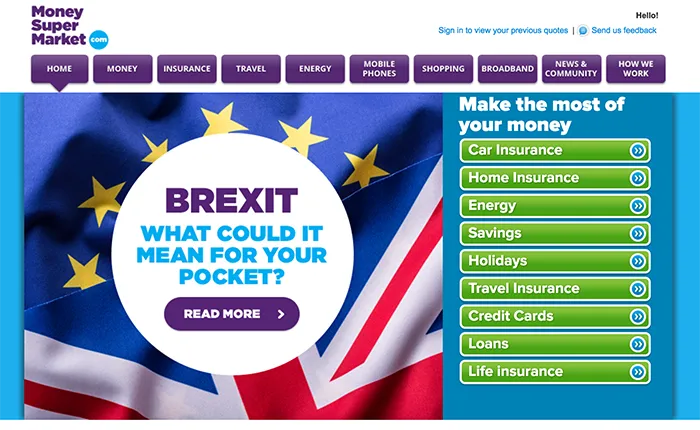
The site stays relevant to visitors offering insights into current events and how to spend accordingly. This is coupled with a crisp, clean aesthetic that projects an image of security amidst the high-value experience.
Final Takeaways
This has been a comparison between the similar, yet functionally different, referral and affiliate marketing programs. Both types of marketing use the influence of other voices to drive sales for your company.
Affiliate marketing relies on paying 3rd party websites and affiliate networks while referral marketing uses the existing customer base to provide outreach and organically increase revenue. To maintain a quality affiliate program, brand advocates need to be relevant and trustworthy in the eyes of buyers, plus capable of providing appropriate marketing materials to convert leads.
Referral marketing is handled by your own brand, using personalized outreach to target specific groups with double-sided rewards that inspire action and increase engagement. The difference between the two types really comes down to how you want to acquire new customers.
